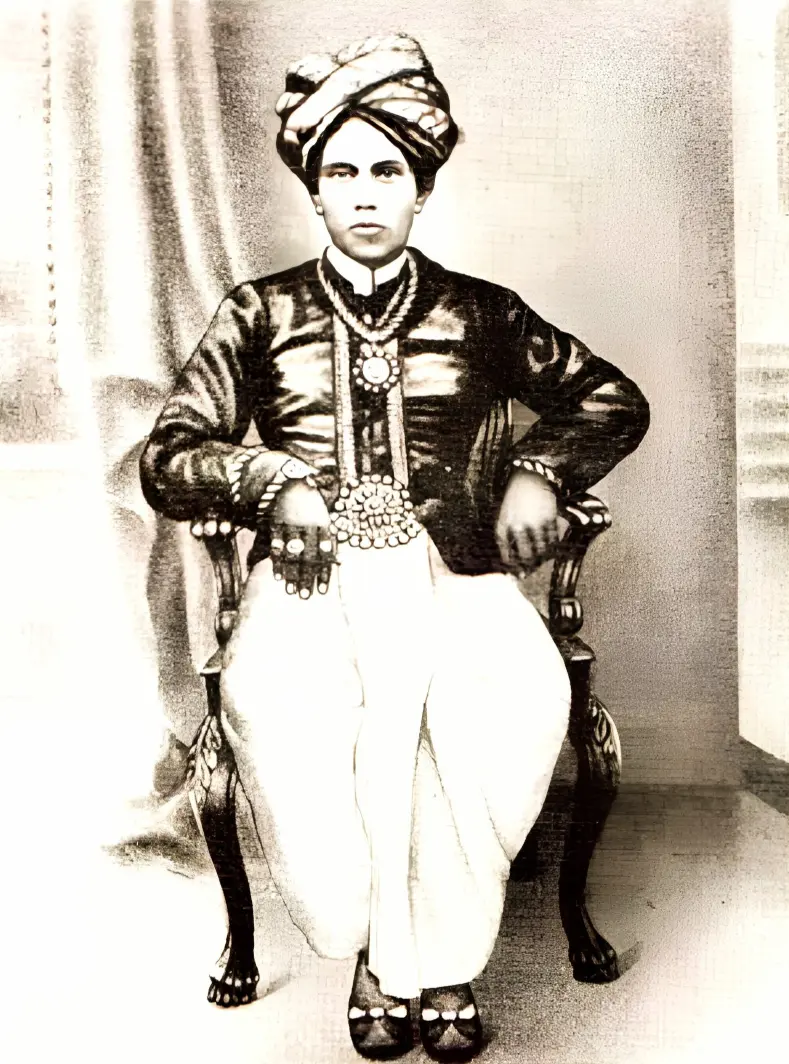Articles > Published Studies > The Heritage of the Nattathi Nadars: A Historical Overview of Their Lineage and Cultural Traditions in the Manadu Region.
The Heritage of the Nattathi Nadars: A Historical Overview of Their Lineage and Cultural Traditions in the Manadu Region.
Published Studies
April 14, 2025
Introduction
The Nattathi Nadars have a rich historical legacy, with records suggesting their governance over Thiruvazhudi Valanadu and parts of Manadu. This article, which is based on the research contributions of Mr. S. Ramachandran, Dr. A. Thasarathan and Mr. A. Ganesan, aims to provide a historical overview of their lineage and cultural traditions.

Zamindar of Nattathi: Thiruvazhuthi Vaikuntha Nadan.
Nattathi Nadars of Manadu
Historical records suggest that the Chola soldiers, who were the ancestors of the Nattathi Nadars, once ruled Thiruvazhudi Valanadu, a region located north of Manavira Valanadu (also known as Manadu). Some members of the Nattathi lineage governed the five Parru (pronounced as Paṟṟu) regions in the southern part of Manadu, namely Manattu Oor, Nangaimozhi, Sidhuvilai, Vallanadu, and Adappanadu.
According to the folk narrative Kumarasamy Nadan Kathai, they enabled their kinsman, Kumarasamy Nadan, to seize power from a Nayak representative in 1650 AD and become the ruler. Inscriptions related to the Nattathi Nadars have also been discovered in Thiruvazhudi Valanadu, near Perungulam.
Cultural traditions of Nattathi Nadars and their ties to Kongu Nadu
The Telugu word for home, Indi, is used to denote their 63 subdivisions, suggesting that they may have been warrior settlers who established themselves under the rule of the Telugu Cholas. A longstanding tradition associates the Nattathi Nadars with the Subramania Swamy Thirukalyanam festival at the Tiruchendur Subramania Swamy Temple, where they participate on behalf of the bride, Valli (the Hindu goddess and consort of Subramania). Historical records indicate that Kulandhai Anandan, the ancestral guru of the Kongu Vellalars, was a Nattathi Nadar. The name Kulandhai is believed to be linked to a large village near the Nattathi farmlands in the Thoothukudi district.
In 1860 AD, Vaikuntha Nadan, the leader of the Nattathi Nadars and the village headman, received a sannad from the British. According to this document, he was granted permission to travel to Kongu Nadu in a palanquin, accompanied by his bodyguards, and to return with due honours. The historical connection between the Nattathi Nadars and Kongu Nadu warrants further exploration. Records indicate that a group of Telugu Cholas settled in the Kongu Nadu region around the mid-16th century AD. During British rule, Thiruvazhuthi Vaikuntha Nadan, the overlord of Nattathi, was a Zamindar.
Conclusion
The involvement of the Nattathi Nadars in temple customs, along with the recognition they received from the British, reflects their societal prominence. Inscriptions and folk narratives continue to provide insights into their past, highlighting the need for further research to deepen our understanding of their historical contributions and lineage.
See Also
- From oblivion to light: Reconstructing Nadar community's history through recently discovered ancient documents.
- Connecting the Dots: Understanding the Relationship Between the Noble Sanrors and the Nadar Community.
- Unravelling the Historical Misconceptions Surrounding the Nadar Community: The Actual Social Standing of the 19th Century Nadars.
References
- A. Thasarathan and A. Ganesan. "Māṉavīra Vaḷa Nāṭṭuk Kalveṭṭukaḷ." Tamiḻil Āvaṇaṅkaḷ, edited by A. Thasarathan, T. Mahalakshmi, S. Nirmala Devi, and T. Bhuminaganathan. Tamil Archaeological Book. International Institute of Tamil Studies, Government of Tamil Nadu, 2001, pp. 52-59.
- S. Ramachandran. Valaṅkai Mālaiyum Cāṉṟōr Camūkac Ceppēṭukaḷum. Tamil Archaeological Book. International Institute of Tamil Studies, Government of Tamil Nadu, 2004.
- Hardgrave, Robert L., Jr. The Nadars of Tamilnad. University of California Press, 1969.